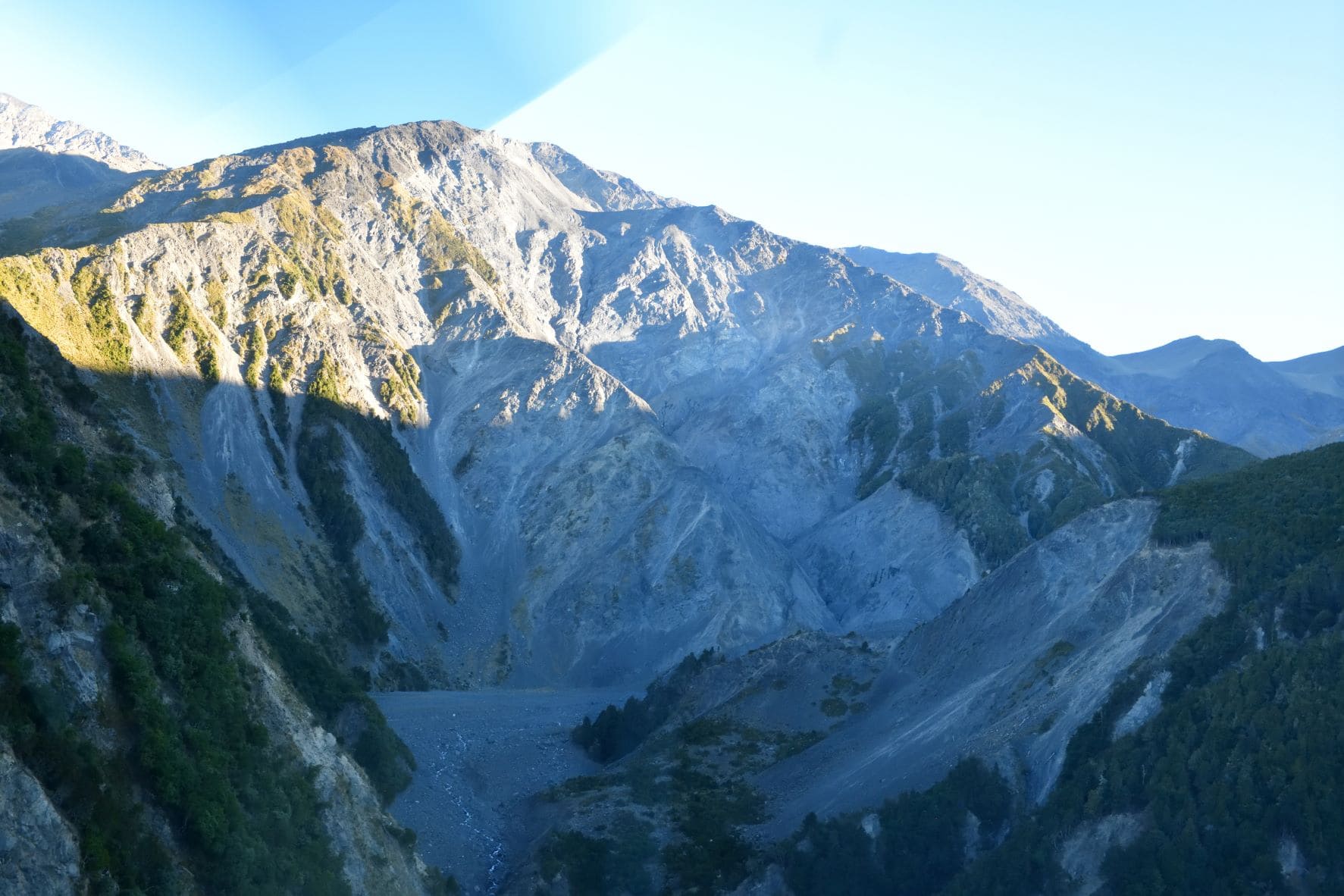
Tunnicliffe, J., Howarth, J., & Massey, C. 2021, April. The transformation of a steepland river valley following an earthquake-triggered landslide near Kaikōura, NZ. In EGU General Assembly Conference Abstracts (pp. EGU21-10867)
In the relatively short and steep catchments of New Zealand’s Alps and Front Range, river systems traverse several process domains, from steep boulder-bed cascades to shallower braided range-front streams. Headwater streams (slope gradient >0.1 m·m-1) typically operate in a state of ‘supply limited’ conditions, where the river’s ability to carry sediment far exceeds the supply of material from upstream. With the catastrophic delivery of 13M m3 of landslide detritus following the 2016 7.8 Mw Kaikōura Earthquake, a tributary of the upper Hapuku River was filled to depths of up to 30 m, as debris spilled 1 km downstream from the delivery point. Nine airborne LiDAR surveys along the 12 km corridor have captured the transformation of the system from step-pool cascade to an unstable aggrading braidplain deposit to a vigorously incising channel, within four years of the event. With this rare window into disequilibrium conditions, we document the dramatic shifts in channel behaviour and dramatic reworking of the debris train following the landslide. There are two distinct phases: (1) a highly dynamic and unstable aggradation phase, with supply from upstream greatly exceeding river transport capacity and (2) exhaustion of supply from upstream and downcutting, maintaining high sediment transport rates through recruitment of material in the valley deposit. With a catchment area of only 3 km2, the upper river has transferred more than 4.2×106 m3 of coarse-grained material in 9 storm events of relatively modest intensity. This sequence of surveys provides an unprecedented picture of dramatic changes to a steepland river system in the aggradation/degradation cycle, which are very seldom captured owing to both the remoteness of such sites and the relative rarity of such events. A temporal picture of the valley sediment budget demonstrates the remarkable capacity of alpine systems to absorb disturbance through storage in the upper reaches, modulating the timing and the sedimentary character of materials being transferred to the reaches downstream. The case study highlights the utility of repeat LiDAR surveys for large-scale process studies and provides insights for assessing residence times of major landslide deliveries following large earthquake events.
Head Office
1 Fairway Drive,
Avalon 5010
PO Box 30-368,
Lower Hutt 5040
New Zealand